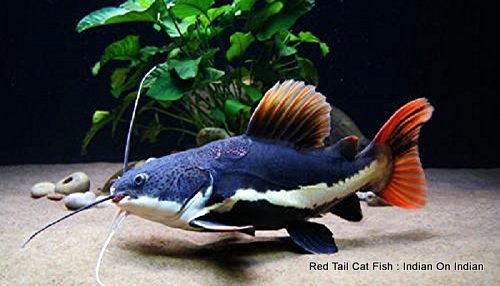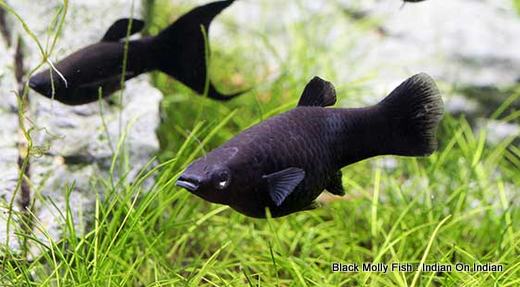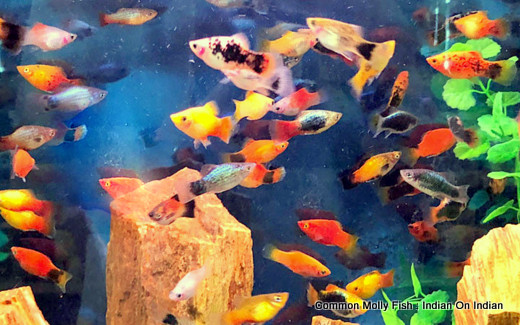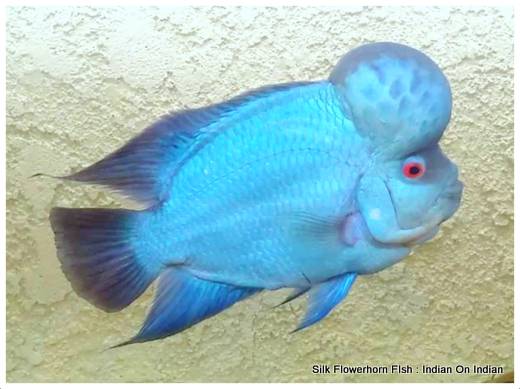 In previous five Posts on Goldfishes and Their Breeds”, We have talked About 14 varieties of Goldfishes, Now in this article, we are going to introduce 2 more goldfish: Panda Moor and Veil tail Goldfish with you.We will also tell you about their textures, diet, activities, and specializations. So let’s start trying to explore the beautiful world of Goldfishes once again.
In previous five Posts on Goldfishes and Their Breeds”, We have talked About 14 varieties of Goldfishes, Now in this article, we are going to introduce 2 more goldfish: Panda Moor and Veil tail Goldfish with you.We will also tell you about their textures, diet, activities, and specializations. So let’s start trying to explore the beautiful world of Goldfishes once again.
15. Panda Moor Goldfish

Panda moor goldfishes are the bi-colored variety of the telescope goldfish. As I have stated earlier in my previous article, titled: Goldfishes breeds part 5.That: There is a bi-colored variety of telescope goldfish. This bi-colored variety of telescope goldfish is called panda moor goldfish.Doubt cleared!
General introduction
If you’ll search on the internet then mostly black and white colored panda moor appear. This is obvious and apparent that being called as panda moor they sport black and white coloration but that is not a strict case. Apart from black and white coloration, they are also found in red and white coloration. I would like to point out that red in the case of goldfishes vary from fish to fish and there is a wide spectrum of different shades of red present in panda moor goldfishes also. But yes, they are most commonly found in black and white.
One more thing I would like to point out here that there is no fix pattern and distribution of coloring and markings on panda moor. They can be found in any number of patterns. But, the most prized version is the one with black on just eyes and rest of the body is white with the tail being black. This pattern is extremely rare and thus is most sought after.
As for the shape and structure, they are just another variety of the telescope goldfish so please refer to my article:
Caution in rearing panda moor
Now there is one thing that you should know before falling for the beauty of this breed of goldfish. They don’t remain as beautiful forever. Yes, this is true. The dark colors on the panda moor tend to fade as they grow. They usually achieve their best coloration between the age of 6 to 8 months. After that their colors tend to fade as they grow sometimes turning them into complete white telescope goldfish. So please keep this thing in mind before you foray into this breed.
With the feeding, age, size and caring they as just similar to the telescope goldfish and the black moor goldfish. So for more details please refer to my previous article.
16. Veil tail Goldfish
Well, this one the veil tail goldfish is very interesting. Veil tail goldfishes are one of the very few fancy goldfish’s breeds that were developed outside China or Japan. Still, they trace their roots back to Japan.
General introduction
Tough the veil tail goldfish has been developed in the state of Philadelphia in the last couple of decades of the nineteenth century (last of the 1800’s) but they were developed from the breeding stocks of the then imported Japanese Wakin goldfish that were having slightly longer tail and back fins than regular fancy goldfishes. The Japanese Wakin goldfish were developed in Japan in the early sixteenth century from the original Chinese wakin goldfishes which were brought to Japan. So here again we come to the fact that all the breeds of modern fancy goldfish trace their origin back to the goldfishes found in China in early third century A.D. but one thing is for sure, the Veil tail goldfish is developed from the Japanese wakin goldfishes having mutated into different types of early fantails like triple lobe or twin lobe tailed goldfish. One more thing, the Japanese wakin goldfish that we are talking about are closest relatives of the wild Crucian carps. These Japanese Wakin goldfishes have an elongated body which is a characteristic of Crucian carp. But they differ in their tails. The fishes from which Veiltail Goldfishes were developed differ in their tails having elongated triple and twin tails. Later the modern day veil tail goldfish have been developed from these tri and bi tailed varieties of Japanese wakin goldfish.
Physical appearance
Now let us move towards the study of their physical appearance. They have a similar body structure as that of the fantail goldfish but is smaller and a little bit rounded up off the edges. Their characteristic veil tail is about as long as their body length. I have seen them to grow around 5 to 8 inches of total body length. Out of this around half is just the long flowing tail. Peculiarly, in comparison with the other goldfish varieties, the veil tail goldfish does not show an appreciable increase in size and length when kept in well maintained large aquariums. I don’t know the reason behind this but maybe this is another breed characteristic that went unnoticed. Or, maybe, there is so much of a variation that no breed developer is willing to claim any contradiction.
The most striking and instantly recognizable feature of the veil tail goldfish is their long flowing, very delicate and beautiful tail fins. When they move slowly in still water they are so calm, I just can’t explain the sense of peace I get watching them swimming in calm and clear water. Just beautiful! This unique feature of the long flowing tail has also influenced their other fins. They have a beautiful long dorsal fin also. Like the fantail goldfish, this dorsal fin is held high and erect in the case of veil tail goldfishes also. This dorsal fin, as I stated earlier is quite long and can grow beyond 2 inches in length. These are some visible differences that can be clearly seen in between a fantail goldfish and veil tail goldfish.
Life expectancy
This difference does not arise in the case of life expectancy. Similar to other fancy varieties of the goldfishes they tend to live around 15 years in household small aquarium setup and when kept in a large well-maintained aquarium or an outdoor or indoor large goldfish pond they can reach the 20 years age or may be able to cross that limit.
Scales and colors
As like the other fancy varieties of the goldfishes, the veil tail goldfish also have different types of scales, actually, three different types of scales. They are found in common metallic type scales and less commonly in speckled which is also known as the nacreous types of scales and in matt finish scale which has somewhat whitish or faded appearance.
As for the colors, they are found in almost all of the common goldfish’s colors. They appear in solid red, different shades of solid red ranging from dark red to lightest orange, also found in bi-colored variations most commonly in the combination of white and various shades of red and orange. Very clear patterns in bi-colored varieties are known as a variegated color pattern. The third variety of color found in veil tail is the calico pattern. This pattern is actually a base bicolored pattern and drops of black here and there. The base color in this might have different shades of red and orange and the density of black drops vary from one veil tail to another.
Precautions
There are some usual and some particular precautions that should be taken care of in the case of veil tail goldfishes. Some conditions are common with other types of fancy goldfishes. They are small and slow swimmers and slow eaters, considering this in mind they should not be kept with fast-moving varieties of goldfishes like the comet and common goldfishes. They are unable to compete with fast-moving varieties of goldfishes owning to their body shape, tail and small size. If they are kept with these fast-moving goldfish varieties they will definitely starve.
Additional to this feeding problem their physical limitations give rise to one problem also. They can’t be kept in crowded aquariums. At least 20 liters of water should be provided per fish.
Some health problems are common with other fancy variety of goldfishes, but some are particular to the veil tail goldfishes. Their long flowing tail and back fin are susceptible to various kinds of damages. Sometimes the strong flow of the underwater aeration filter can rip their tails and fins. Once torn off they can’t regenerate into the same shape secondly, the torn off edges are easier to be attacked by fungus and other parasitic microorganisms. The big problem is that in most cases infections especially the fungal infections will spread so fast that fishes are unable to respond to the initial treatment in crowded and ignored aquariums. I will give a detailed account of goldfish diseases and their treatments after completion of this series so watch this blog for all your needs and queries for goldfishes.






